
Behind the scenes peek into the design process that led to the world's first custom colored solar facade
Ever since the dawn of solar, architects and artists have envisioned the technology being seamlessly integrated with the built environment. But the field of BIPV (building-integrated photovoltaics) has thus far remained more hope than reality given the limited aesthetic range of cookie cutter solar panels in the market. That is all about to change with the introduction of SolarSkin technology for architects. Here is the story about how Sistine Solar helped create the world's first custom colored architectural solar facade.n
In the summer of 2019, All Energy Solar, one of the leading installation companies in the US, reached out to the Sistine team with an increasingly common question we hear: “Our customer wants solar, but they need the panels to work with the aesthetics of their building. Can you make it happen?”
The customer was renowned commercial real estate developer, The Ackerberg Group. The Ackerberg team wanted solar panels to meet the energy goals of their LEED Gold certified MoZaic East building in uptown Minneapolis, but they were clear that they wanted the installation to be “anything but traditional”. In the words of Ackerberg's Mike Munson, they “envisioned an artful, colorful solar demonstration on MoZaic East’s southern facade.”
The Challenge
All Energy's Director of Business Development, Michael Thalhimer, and his team scoured the marketplace for solutions that could meet three important criteria: (i) achieve Ackerberg’s requirements on color and design, (ii) be compatible with their preferred choice of Tier 1 solar panels, and (iii) maintain long-term performance through the cold and harsh Minnesota winters. As the world’s only solar technology that is 100% customizable in color and graphics, universally compatible with any make and model of solar panel, and tested for the most rigorous environmental conditions at NREL, Sistine’s patented SolarSkin checked those boxes perfectly.
The Design Process
Our team of in-house artists and designers collaborated with Ackerberg’s architecture partners, Alliiance, from concept through final selection of the designs. Alliiance's lead project designer, Ernesto Ruiz-Garcia, laid out the vision of having designs that achieved an organic fit with the architectural features of the MoZaic East building. This evoked two design directions, one playing off of the diagonal line patterns used in the lobby of the building and the other staying true to the optical properties and surface reflectance characteristics of the facade surface.
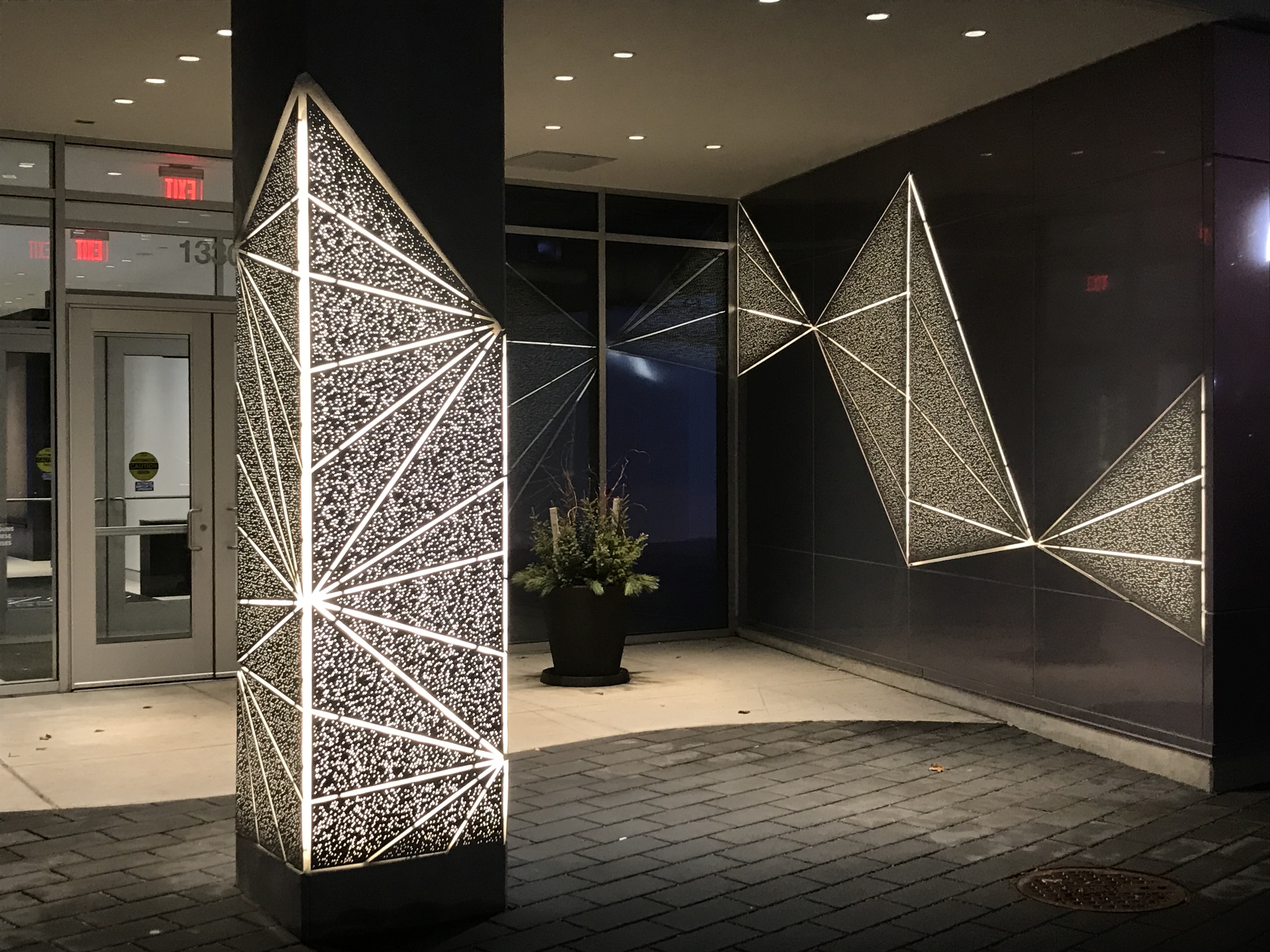
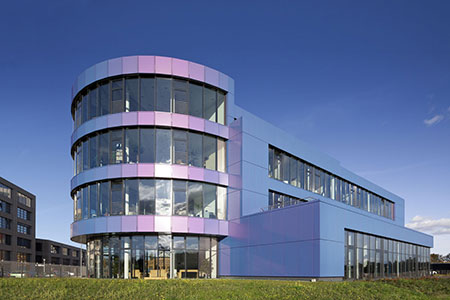
The starting points for our design inspirations. On left, the diagonal line patterns in the lobby of the MoZaic East building. On right, the color shifting facade material used on the exterior of the building. Photos courtesy of Alliiance and Arconic.
Our artists developed over a dozen different possibilities that they sketched and digitally simulated using Sistine’s proprietary visualization tools. From those simulations, Alliiance was able to narrow it down to two final candidates, one employing diagonal lines and the other a checkerboard pattern. The Sistine team produced those skins at our facility in MA and shipped them to Minneapolis for on-site testing.
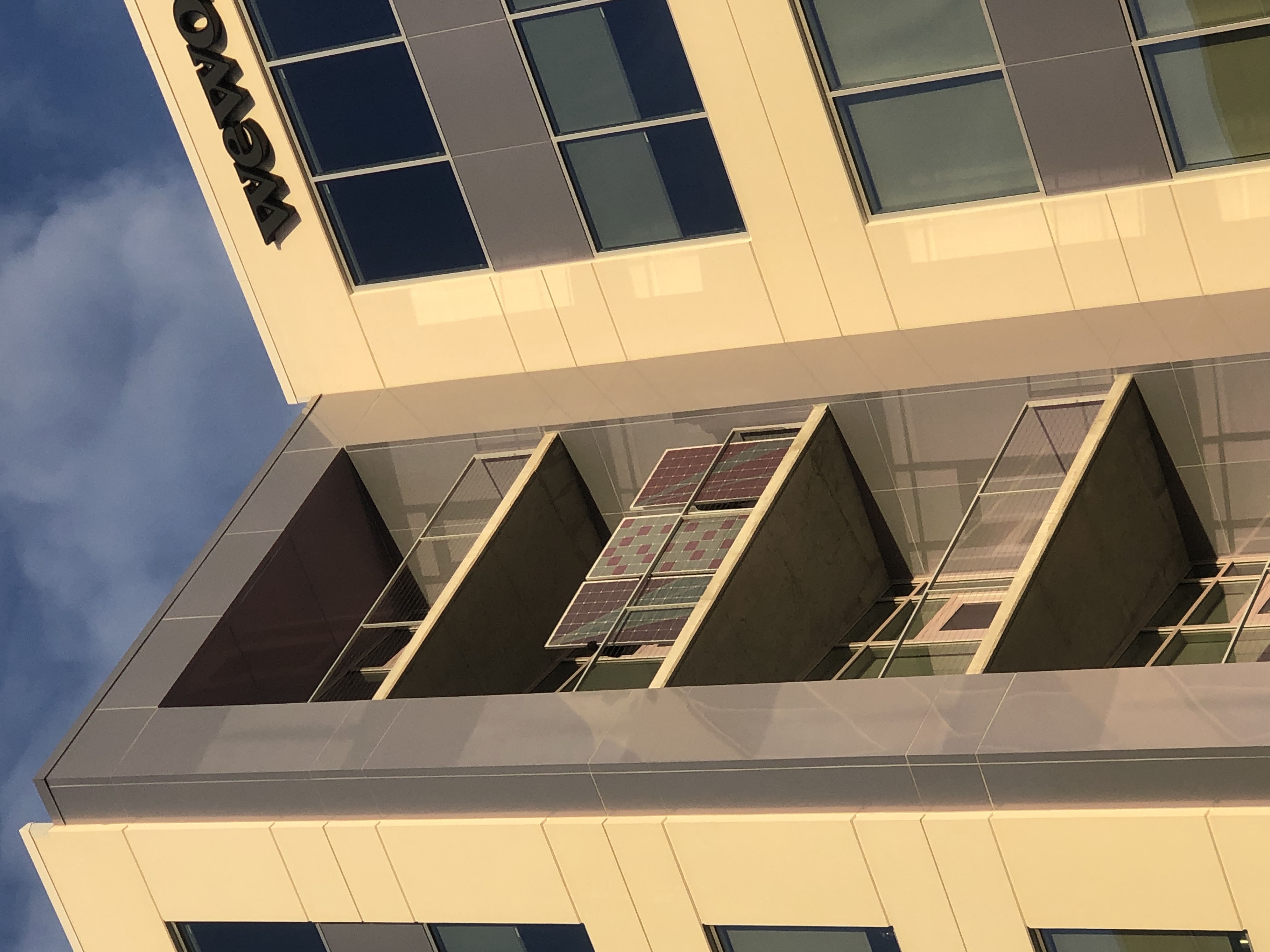
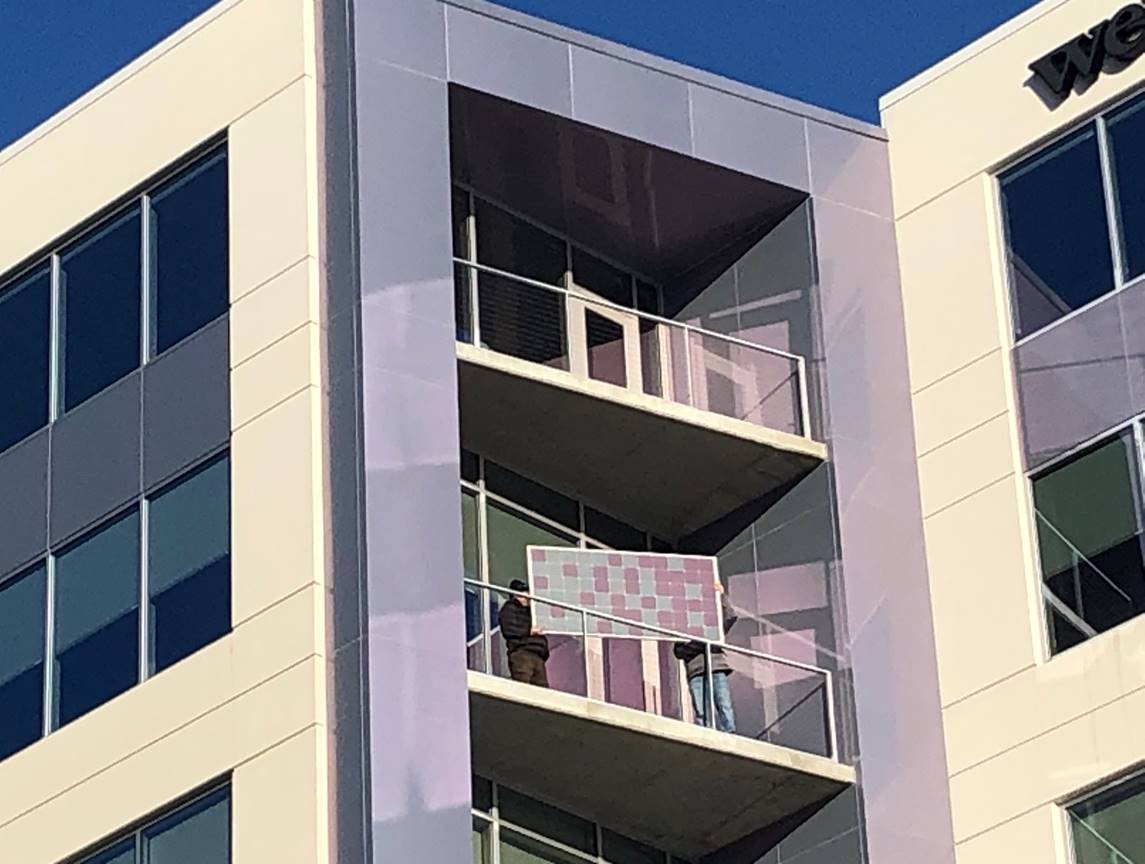
On-site evaluation and selection of design direction. We iterated on a diagonal pattern against purple background and a checkerboard pattern with shades of purple and subtle blue. The client team unanimously picked the checkerboard concept on right. Photos courtesy of Alliiance and All Energy Solar.
The verdict from the Alliiance and All Energy teams was resounding – they fell in love with the checkerboard design that employed shades of purple and blue hues.
Bringing it all together
The architectural vision behind the checkerboard pattern was to have the panels pay homage to the unique surface characteristics of the building facade. The MoZaic East building uses a dichroic material that exhibits different hues of purple, green, and light blue under different lighting conditions, sun positions, and angles of view. Over the course of the same day, the building goes through a range of different hues, which poses a very challenging design consideration: how to create a design that reflects this dynamism?
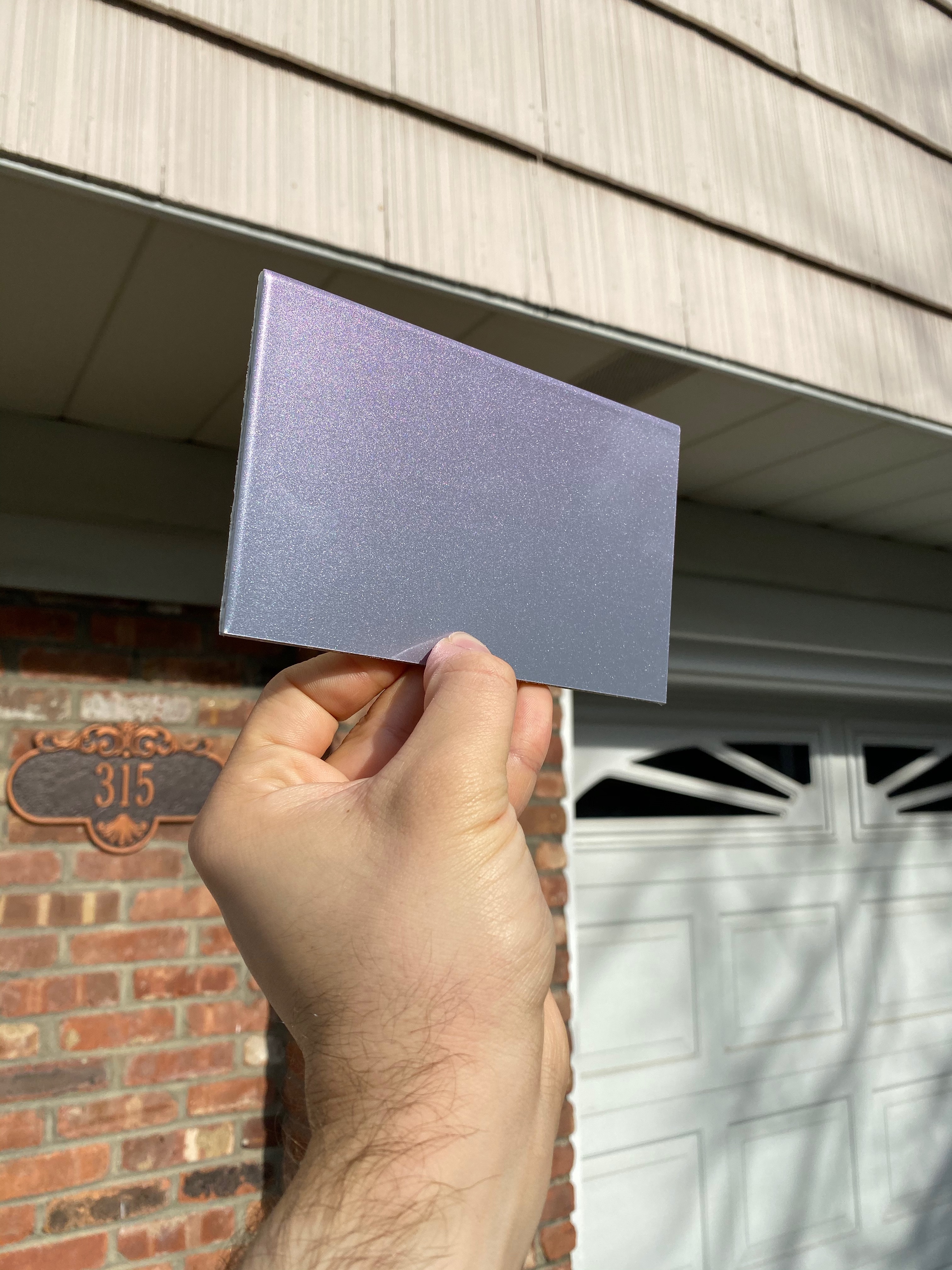
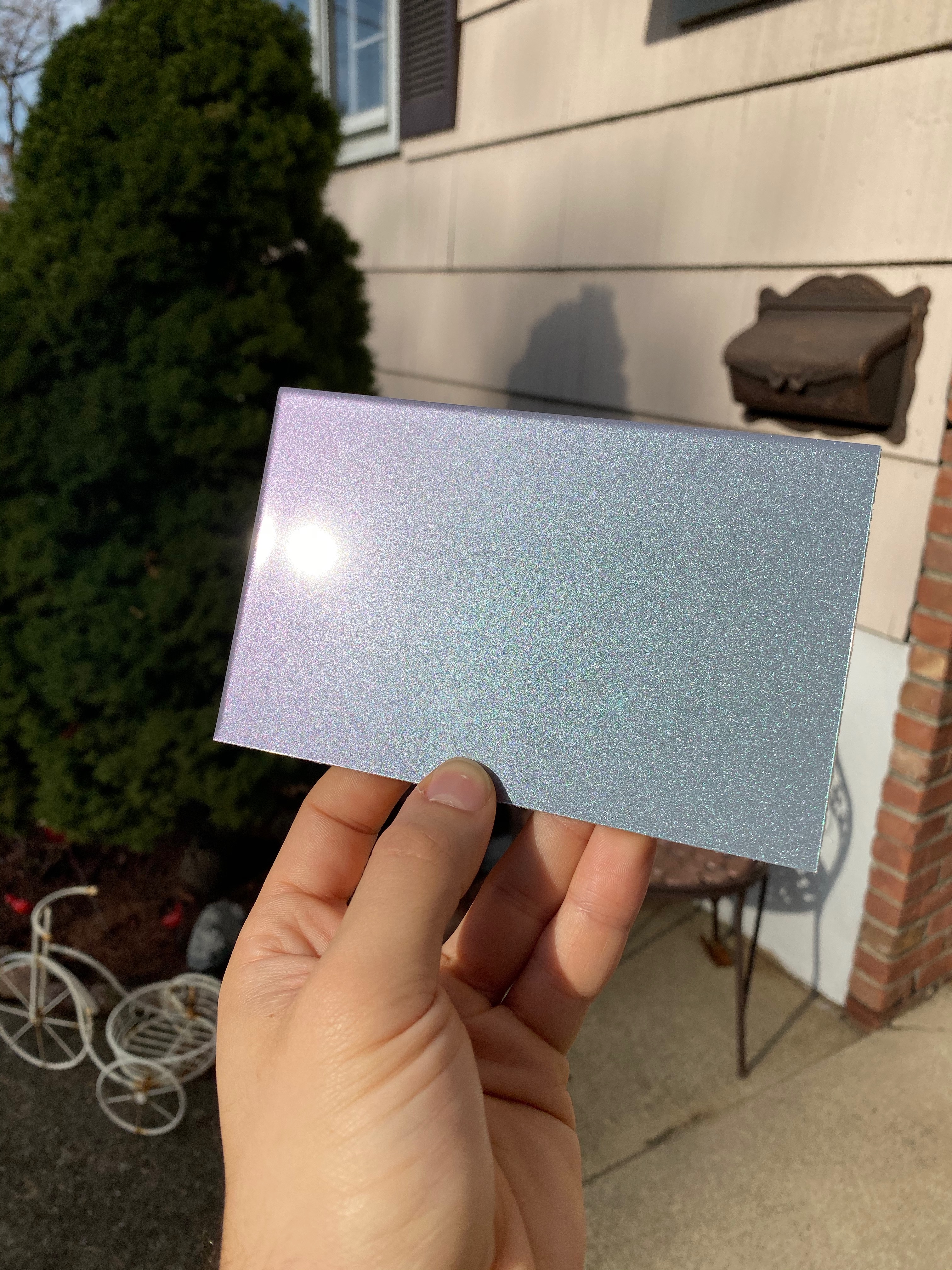
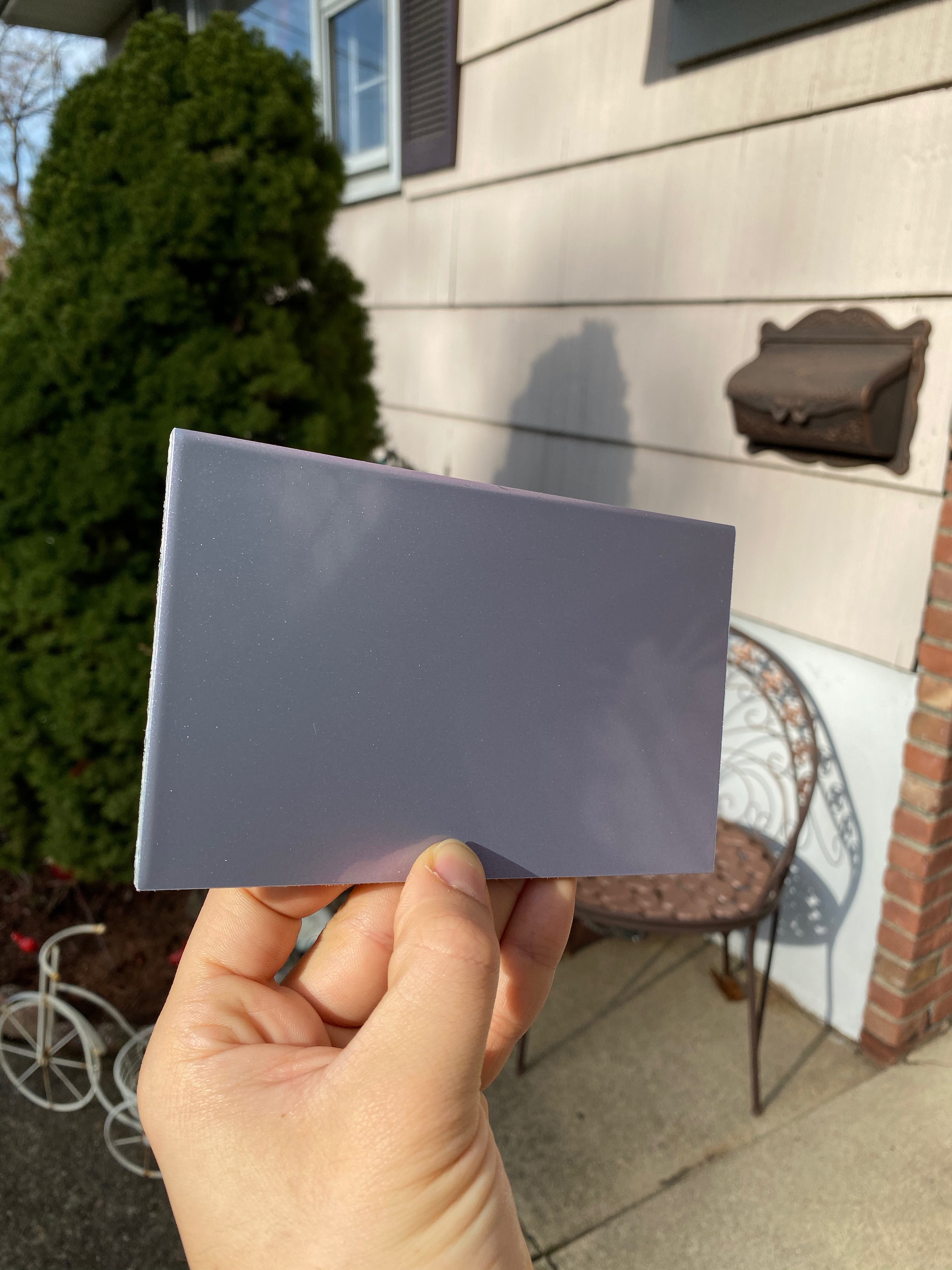
A particularly challenging aspect of this project was working with the ever shifting color tones of the facade surface. The unique Rynabond material from Arconic exhibits dichroic surface reflectance that results in the color appearing different shades of purple, light blue, and green depending on ambient lighting and angles of view. Photos by Sistine Solar.
Enter SolarSkin’s unparalleled aesthetic versatility. In partnership with Alliiance, the team produced 24 distinct and different checkerboard patterns, each with a different mix, configuration, and distribution of shades of purple and subtle blue. By thoughtfully dispersing and repeating these patterns across the building surface, the solar panels were transformed to exhibit a constantly flowing gradation of hues that accentuates the dichroism of the facade. The effect was further amplified by All Energy’s novel use of custom brackets that allowed the panels to be offset from the facade at varying angles.
The end result: a flowing wave of subtle hue gradations that complement the building facade and elevate the MoZaic East building’s architectural profile. Oh, and lest we forget, a 43KW system with JA Solar 385W panels that will power this LEED Gold certified building.
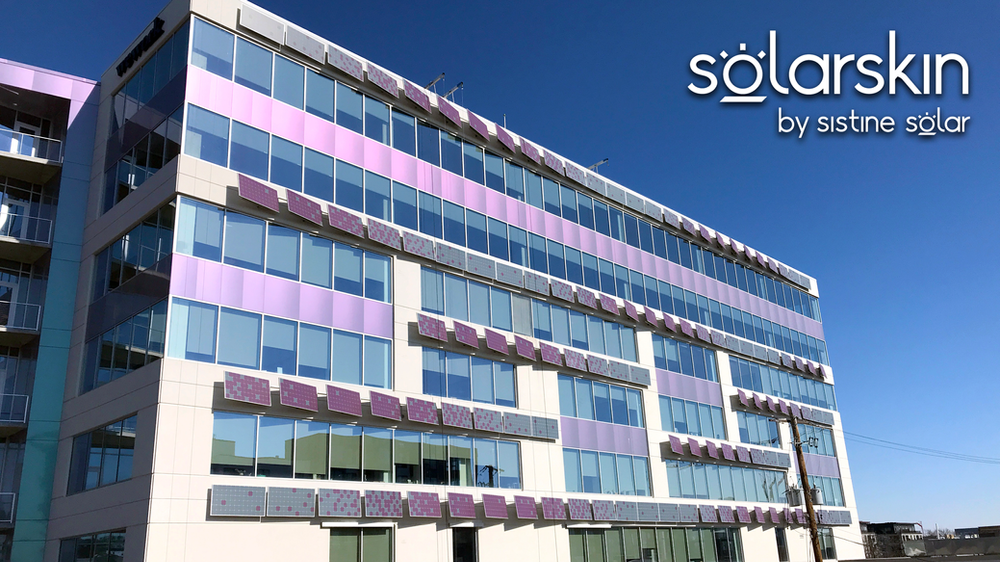
The final installation involved 24 distinct and different checkerboard patterns, each with varying mixes and distributions of purple and grayish blue to pay homage to the color shifting characteristics of the facade. See, for instance, the top left panel that blends elegantly with the gray background while panels elsewhere show gradations of purple just like the Rynabond surface. The installation’s fluid color dynamism has never before been seen with solar. Photo courtesy of All Energy Solar.
“Contrary to tradition, we instead envisioned an artful, colorful solar demonstration on MoZaic East's southern facade. Sistine Solar brought this vision to life. By introducing the SolarSkin product, we were able to gradient purples and blues which play off the color changing metal tones of the building. Working with the Sistine team made the project seamless, and we couldn't be happier with the end result. We are excited to be a trailblazer in creative solar technology in the Twin Cities and U.S. as a whole, and hope this solar project encourages others to think out-of-the-box on environmentally sustainable projects."
Mike Munson (The Ackerberg Group)
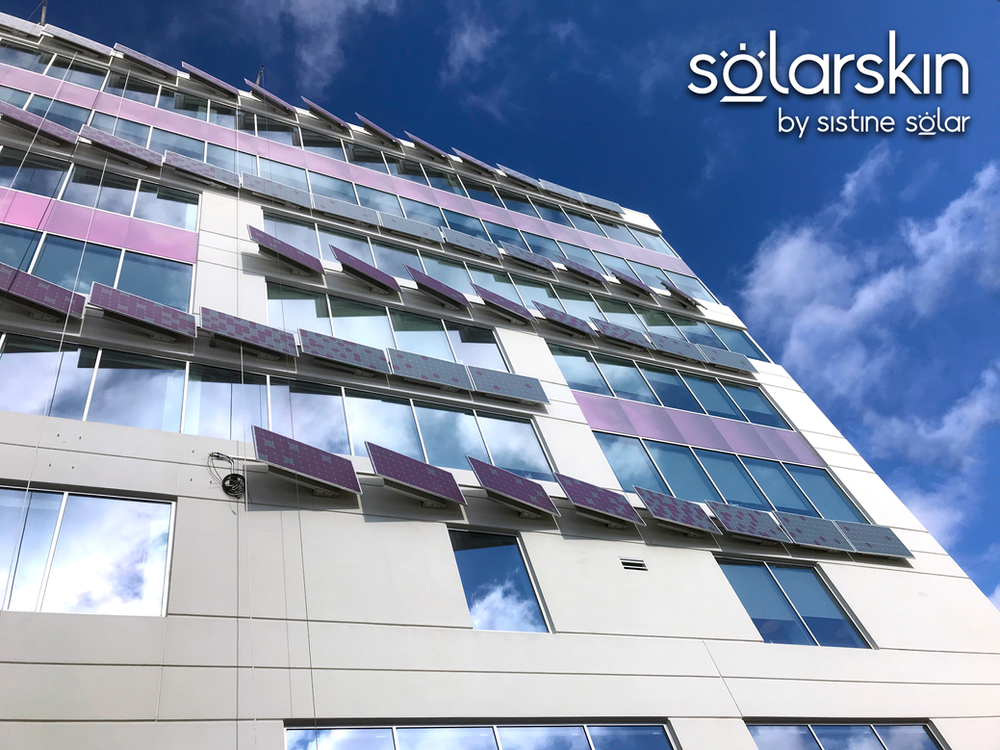
The color dynamism unleashed by SolarSkin was accentuated by All Energy’s novel custom bracket installation resulting in the panels being offset at various angles. Photo courtesy of All Energy Solar.
“With only a few months to fully develop a highly customized array and incorporate the SolarSkin product, Sistine Solar jumped in with us to the fullest. The team was incredibly responsive and helped navigate the design process plus provide valuable guidance on proper application steps to ensure our finished product was a success. We can’t say enough about our experience and look forward to many more projects with Sistine in the future!"
Michael Thalhimer (All Energy Solar)
Design x Engineering
As the first days of spring 2020 dawned on the land of 10,000 lakes, this world's first architectural solar facade was turned on and is now churning out clean, unadulterated energy from the sun. The Sistine journey began in 2012 in the classrooms of MIT with the vision that at the intersection of design and engineering lay the key to making solar capture the world's imagination. The MoZaic East project is one more example of this vision brought to life. For more such projects and possibilities, step here.


